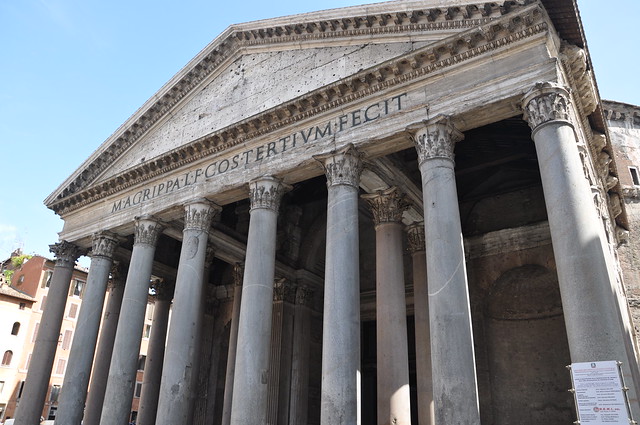
O nosso hotel ficava muito próximo do Panteão, desde a Via Arco de Ciambella demoramos uns cinco minutos (se tanto) a chegar até á Piazza della Rotonda onde está localizado.
A primeira vez que o vimos foi de noite, saímos da Piazza Navona para ir á Fonte Trévi atirar a moedinha. De noite é impressionante, mais obscuro e misterioso, acaba por ser a estrela da charmosa praça onde se concentram muitos turistas principalmente aquela hora onde alguns artistas de rua a tornam ainda mais animada.
Our hotel was very close to the Pantheon, from Via Arco Ciambella it took us about five minutes (if that) to reach the Piazza della Rotonda where it is located.
The first time I saw it was during the evening, we went from Piazza Navona to go to the Trevi Fountain to toss a coin. At night it's amazing, more obscure and mysterious, turns out to be the star of the charming square where many tourists are concentrated mainly at that time where some street performers make it even more lively.
The first time I saw it was during the evening, we went from Piazza Navona to go to the Trevi Fountain to toss a coin. At night it's amazing, more obscure and mysterious, turns out to be the star of the charming square where many tourists are concentrated mainly at that time where some street performers make it even more lively.
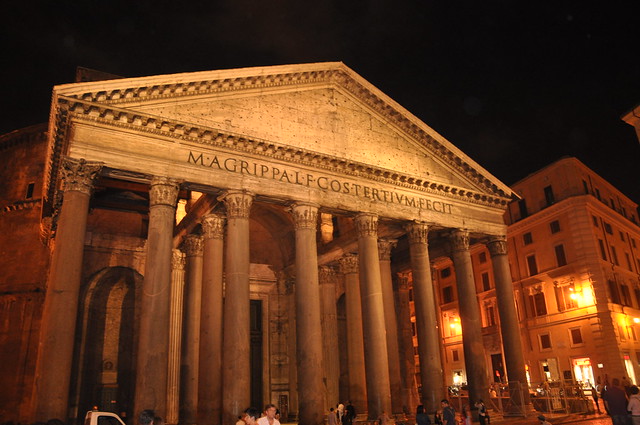
A segunda vez que passámos, outra vez de noite, estava um cantor de Ópera que "esgotava" a praça, cantava como o Andrea Bocelli e fez com que todos se perguntassem porque é que estava ali na rua a cantar sendo tão talentoso.
A versão do Panteão que vemos hoje é do século 125 d.C. que o imperador romano Hadrian mandou construir após a primeira versão de Agrippa a 24 a.C. ter sido destruída num incêndio. É o nome de Agrippa que está escrito no pórtico do Panteão.
Quando entramos a visão da cúpula é impressionante, tem um óculo que lhe permite ter bastante luz e um bem conservado chão de mármore.
The second time we went, again at night, there was a singer of opera that "sold out" the square, sang like Andrea Bocelli and made everyone ask why he was there on the street singing being so talented.
The Pantheon version we see today is from the century AD 125 that Roman Emperor Hadrian ordered the building after the first version of Agrippa from 24 BC had been destroyed in a fire. Is the name of Agrippa that is written in the portico of the Pantheon.
When we enter the view of the dome is impressive, has an oculus that allows you to have enough light and a well-preserved marble floor.
The Pantheon version we see today is from the century AD 125 that Roman Emperor Hadrian ordered the building after the first version of Agrippa from 24 BC had been destroyed in a fire. Is the name of Agrippa that is written in the portico of the Pantheon.
When we enter the view of the dome is impressive, has an oculus that allows you to have enough light and a well-preserved marble floor.
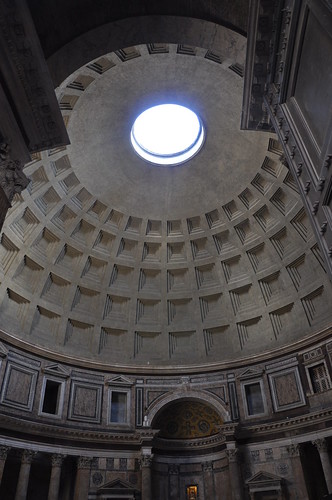
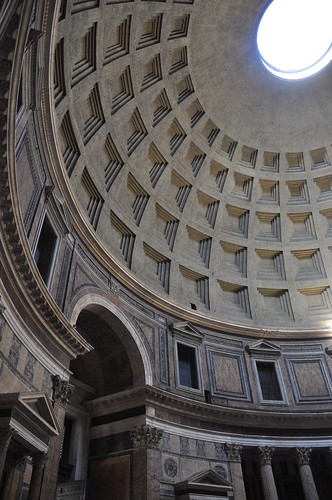
Estão ali sepultados figuras importantes da história italiana, entre eles o Rei Vitor Emanuel II, o "Pai da Pátria" como diz a placa. Mas há outras como a do artista Rafael e ou do Rei Humberto I.
Construído como um templo para os deuses romanos, torna-se mais tarde num monumento religioso. A sua fachada greco-romana contrasta com o seu interior com pinturas religiosas.
A entrada no Panteão é gratuita e livre de filas (felizmente!). Na praça podemos ver ainda a Fonte do Panteão, que ao centro tem um obelisco egípcio.
Important figures of Italian history are buried there, including King Victor Emanuel II, the "Father of the Country" as the sign says. But there are others like the artist Rafael or the King Humberto I.
Built as a temple to the Roman gods, later becomes a religious monument. The Greco-Roman façade contrasts with its interior with religious paintings.
The Pantheon is free entrance and free queue (thankfully!). In the square we can still see the Fountain to the Pantheon, which has an Egyptian obelisk in the center.
The Pantheon is free entrance and free queue (thankfully!). In the square we can still see the Fountain to the Pantheon, which has an Egyptian obelisk in the center.
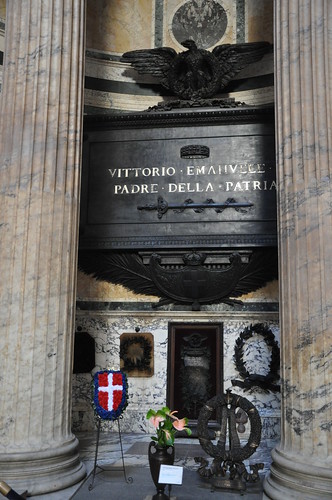


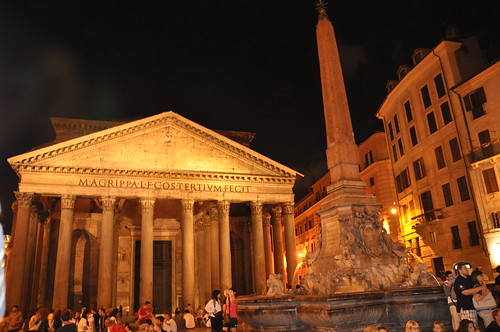
De noite, a praça enche sobretudo com turistas que jantam nas várias "trattorias" e aproveitam o bom ambiente. Outros sentam-se junto á fonte a saborear um gelado que compraram numa das gelatarias que há ali perto.
At night, the square is filled with mostly tourists who dine at the various "trattorias" and enjoy the good atmosphere. Others sit near the fountain to taste an ice cream they bought nearby.



Sem comentários:
Enviar um comentário